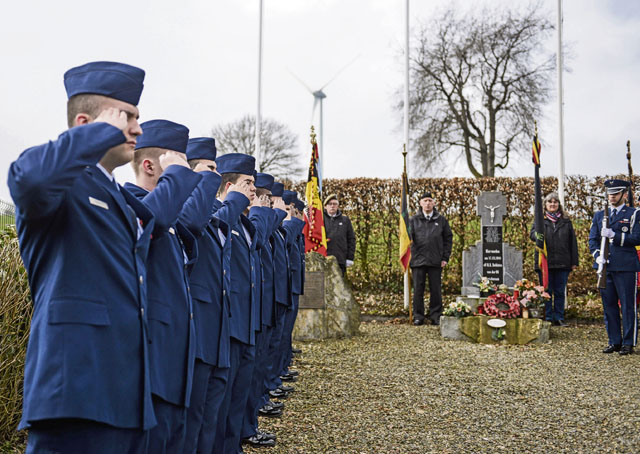
As Black History Month comes to a close, it is our duty to reflect on the many contributions and awesome impact that Black people have made. Throughout the annals of history, there has been no shortage of scientific prowess, artistic ability, or rousing courage in the Black community.
Unfortunately, this means that there have been some who are not routinely highlighted in the history books, and it is our job to keep their stories alive. One such group is the Wereth 11.
On Dec. 16, 1944, the Germans launched their last great offensive against the Western Allies through the Ardennes Forest of eastern Belgium. It would become known as the Battle of the Bulge. The brutality of the Battle of the Bulge is well documented. With instances like the Malmedy Massacre, it has been said that the ferociousness in this battle mirrored that of the Eastern Front (e.g. The Battle of Stalingrad).
The initial priority was to stabilize the 50-mile front that was under attack and many of the units tasked with this duty were all-black (the United States Armed Forces were not desegregated until July 26, 1948, when President Harry S. Truman issued Executive Order 9981). One of these all-black units was the 333rd Field Artillery Battalion.
On Dec. 17, 1944, a number of men from the 333rd were overrun by a contingent of German soldiers accompanied by an armor unit. Chaos ensued, as German infantrymen descended upon the camp site. Those who escaped fled toward the woods for cover, but the freezing rain and mud severely hampered their mobility. As groups broke up to head in different directions and continue to evade capture, a group of 11 men headed west toward American lines.
These men continued to evade at the edge of the tree line for several hours before deciding to ask for help. They eventually made it to a small Belgian village called Wereth. Shortly after emerging from the tree line, white flag in tow, the group was taken in by the Langer family. Harboring this group was an incredibly dangerous decision on the part of the Langers. Wereth and the surrounding area had been a part of Germany before post-World War I annexations. There also remained a number of residents that identified as German and were sympathetic to the Nazi cause.
Later that same evening, an SS convoy descended upon the house; they had likely been tipped off by one of the German sympathizer families in the village. The men emerged from the house with their hands up, likely to avoid any harm being done to their harborers. The SS patrol forced the men to run toward a small field outside of the village where they proceeded to kill all 11 men.
In February 1945, an American infantry patrol was directed to the site by villagers, and they discovered the frozen bodies of the victims. From their remains, it was evident that the SS had savagely beaten and tortured the men prior to killing them. Although historians disagree over whether the SS patrol’s actions were race related, the degree of torture and disfigurement suggests that race played a part in what took place, keeping consistent with the perverse racial ideology of the Third Reich.
For many years, the story of the Wereth 11 was conflated with the Malmedy Massacre, which took place during the same battle. In fact, the original report documented a dozen similar massacres during the Battle of the Bulge but did not include any reference to the killings in Wereth.
In the past two decades, a lot of work has been done to unravel the mystery of what happened to those men that day. It wasn’t until recently had there been enough information to truly highlight the sacrifices that Black Americans made in World War II’s European theater.
The exposure of this nearly forgotten war crime, resulted in a resolution (H. Con.Res.68) being introduced in January 2014 in Congress. The resolution sought to correct the omission in the 1949 report and appropriately recognize the dedicated service and sacrifice of the Wereth 11. Though these men did not live to see themselves truly free, by remembering them and their sacrifice we can appropriately add them to the long list of heroes who died for freedom.


